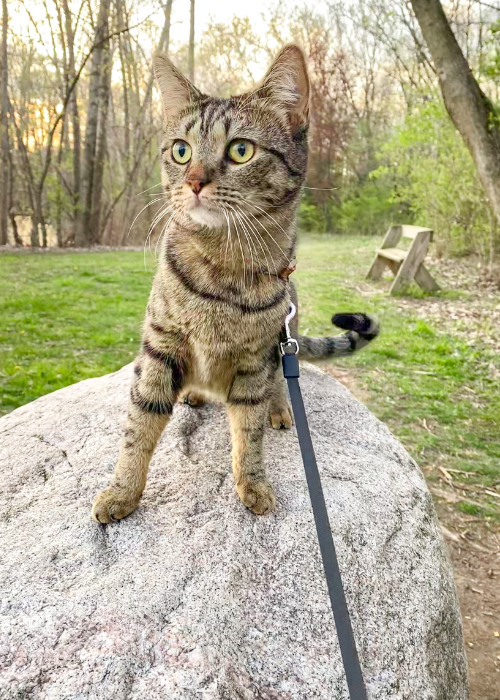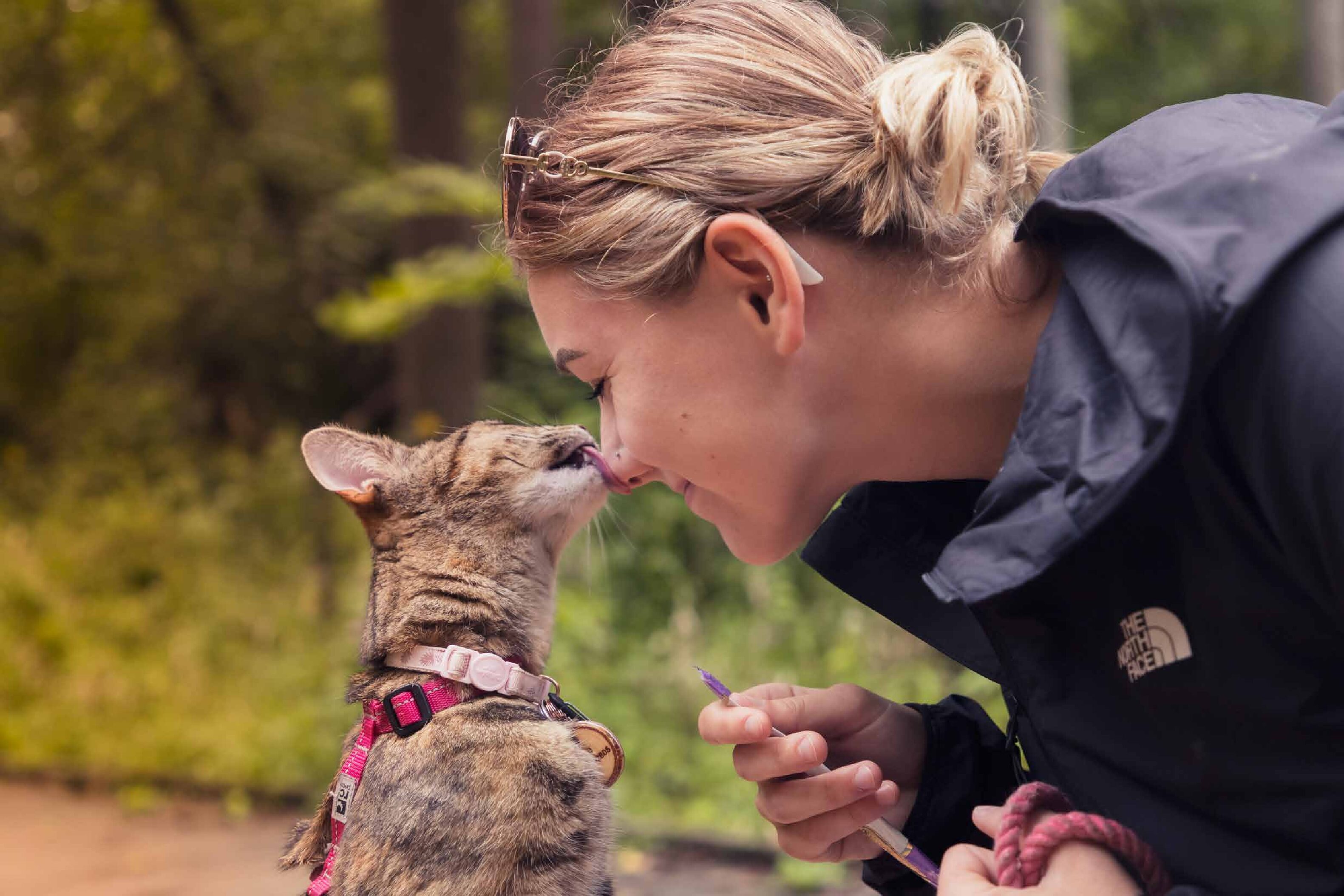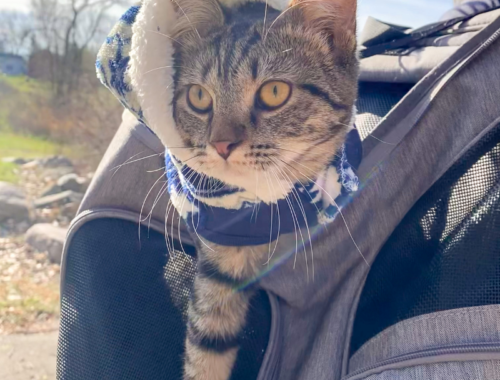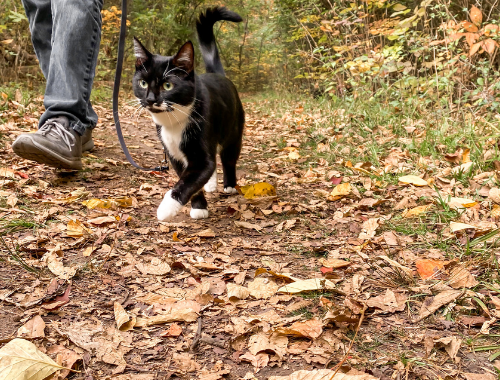
Importance Of A Back-Up Plan When Walking Your Cat
Are you always prepared when our hiking with your cat? Do you have a back-up plan if something unexpected happens? Of course, we always hope for the best when taking our cats outside. But it is important to have realistic expectations and prepare for unexpected circumstances as well.
Realistic Expectations
We have a post called What It Is Really Like Walking Your Cat where we go over what to expect. Walking a cat is not like walking a dog, and we laid out a few key differences. One major difference is the pace of the walk, if your cat is walking themselves. Cats tend to want to just sit around and take in their surroundings, maybe in a bush or tree where they feel safe. So, walking your cat may not actually include much walking. But that is normal. Another difference is the importance of a backpack. When your cat doesn’t want to walk, you will need to carry them.
Have A Back-Up Plan
A huge part of having realistic expectations is knowing that things do not always go according to plan. Therefore, having a back-up plan is super important! So, what do you do when your cat doesn’t want to walk? Well, you listen to what they are trying to tell you, and you adjust your plans from there.
Some options for a back-up plan include:
- Ending the adventure early – sometimes your cat may just not feel up to it that day. Or maybe the smell/sense something unsettling to them and do not feel comfortable. Heading home early is always an option when out with your cat.
- Leave them in the backpack – if your cat is content staying in the backpack during the walk, that’s great. You can continue as planned and keep them safe in there. They may even want to come out eventually.
- Go somewhere else – maybe that trail that day has something your cat senses that is unsettling. Maybe the smell of a predator or even just more people than normal. You can try going to a new place and see if you can continue the adventure there.
- Staying in a quiet, covered spot – cats love to hide when they feel scared or uncomfortable. Give them that option. Maybe your adventure that day only consists of you sitting in the grass while your cat checks things out from under a brush. That is okay. It takes time to work up confidence!
- Food/Toys – bringing something as a distraction is a great way to try to get your cat comfortable. If your cat is food motivated, some treats may be all it takes. But bringing a favorite toy, blanket, or something from home that your cat likes, can help them feel at ease in a new place.
It is also good to know the difference between a frightened cat versus a cat that may just need some extra time.
Frightened/defensive cat
This can look different in different cats. If your cat is puffed up, not walking, extra vocal, “pancaking” (trying to get as flat on the ground as possible), hiding in bushes, hissing/growling, or showing any signs of aggression towards other people or you, then they probably do not feel safe. If this is occurring, it is best to head home. Your cat trusts you, and if they are telling you they feel unsafe, it is your job to remove them from that situation and make sure they feel protected.
You may also want to try even take a step back if this happens frequently. Go back to building trust. Baby steps are important and if your cat needs to backtrack a few steps in their training, there is nothing wrong with that. Pushing your cat into situations they are uncomfortable in can do more harm in the long run than going back a few steps and trying again. Trust is one of the most important things in training your cat, so never skip that step!
Nervous/unsure cat
Sometimes, your cat may be a bit nervous, but not necessarily frightened. This can look similar to a frightened cat and it can be difficult to distinguish the two. Mostly, this comes with time and getting to know your cat and how they communicate. But when in doubt, it is never a bad idea to head home for the comfort of your cat.
If your cat seems uncomfortable, they may just need some time. Have them spend the first 5-15 minutes in their backpack to get a sense of the smells and surroundings before letting them down to explore themselves. You can either continue walking with them in the backpack so they can adjust, or you can sit in a quiet area and leave the backpack open on the ground for them to come out on their own terms. If your cat is food motivated, maybe a little treat is all the encouragement they need.
In the beginning of training, sitting in one spot with them in the backpack may be all that your adventure includes. And that is fine. Letting them explore and come out at their own pace is key in their confidence building outside.
Pet First Aid Kit
Another thing to be prepared for are accidents out on the trails. It may take some time to get back to your car and drive to a vet. But there are some things you can have with you to help your cat until you can get to a vet. Bringing a portable pet first aid kit on hikes or to keep in your car is a great idea. Check out our post on How To Make A Pet First Aid Kit here on what to include or pre-made options to purchase.
Conclusion
Always be prepared and know your back-up plan ahead of time. We never know how our cats will respond to a situation. One day they may love a specific place, and then the next day not. That is normal, so always be ready to accommodate your cat every time you take them outside with you! Some days, your adventures may be cut short, or your cat may not want to go. This happens, even to the most experienced adventure cats! It is perfectly okay to skip days out or head home early if that is what your cat is telling you they want.

Meet Atlas and Lyra
You May Also Like

MEET REED
October 2, 2020
How To Dress Your Cat For Winter Adventures
November 20, 2020

